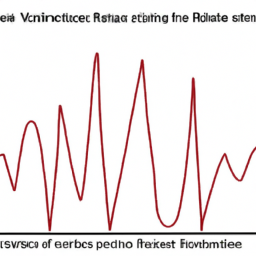The stock market has consistently produced more booms and busts than the housing market but has also had better overall returns as well. Over the last 90 years, there have been several investments that have experienced extreme volatility, but one stands out above the rest.
The U.S. stock market has long been considered the source of the greatest returns for investors, outperforming all other types of investments including real estate, bonds, and commodities. However, within the stock market itself, there have been certain sectors or individual stocks that have exhibited extreme volatility.
One investment that has consistently produced the most volatile returns over the last 90 years is the technology sector. Companies in this sector, such as Apple, Microsoft, and Amazon, have experienced tremendous growth but have also endured significant downturns. The rapid pace of technological innovation, changing consumer preferences, and market disruptions have contributed to the volatility in this sector.
Another investment that has been highly volatile is the oil market. The price of oil is influenced by various factors, including geopolitical tensions, supply and demand dynamics, and economic conditions. The oil market in 2020 has been particularly volatile due to the price war between Russia and Saudi Arabia, as well as the global economic impact of the COVID-19 pandemic.
Volatility in the stock market is driven by various factors, including economic indicators, political events, and investor sentiment. Market crashes, recessions, and financial crises have all contributed to extreme volatility in the stock market. Investors who can navigate these ups and downs may be able to take advantage of the opportunities presented by volatility.
To measure the volatility of an investment, several metrics are used, including standard deviation and beta. Standard deviation measures the dispersion of returns from the average, while beta measures the sensitivity of an investment's returns to changes in the overall market. Investments with higher standard deviation or beta are considered more volatile.
In terms of specific investments, some stocks have been particularly volatile over the past 90 years. Companies like Tesla, Netflix, and Facebook have experienced significant price fluctuations, driven by factors such as earnings reports, product launches, and market competition.
In conclusion, the most volatile investment over the last 90 years has been the technology sector, followed closely by the oil market. These investments have experienced extreme ups and downs due to various factors, including technological disruptions, geopolitical tensions, and economic conditions. Investors who are willing to tolerate and navigate volatility may find opportunities for significant returns, but should also be aware of the risks involved.
